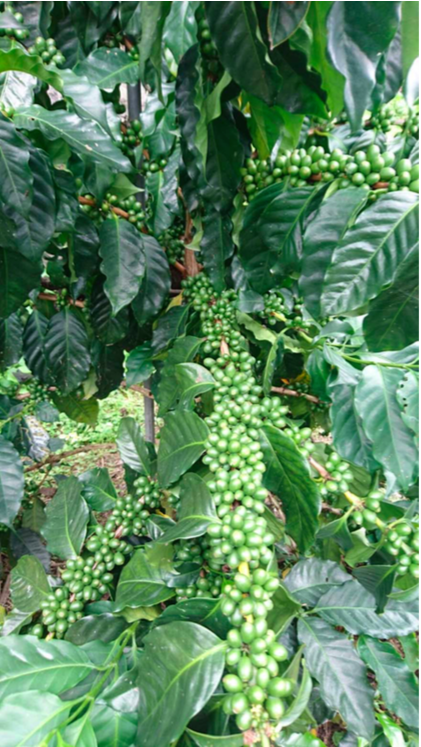Coffee World Map-- the Evolution and planting History of Coffee beans in Indonesia

For professional baristas, please follow the coffee workshop (Wechat official account cafe_style)
Indonesia is made up of more than 17,000 islands scattered over the equatorial volcanic belt and has fertile soil. Famous producing areas include Sumatra in the west, Sulawesi in the middle, and Java in the south. Coffee was brought to Jakarta by the governor of the Netherlands from Malabar, India, in 1696, and local farmers were forced to grow coffee instead of white rice. Since 1850, the Dutch East India Company has expanded its planting area to other Indonesian islands. By far, Indonesia is the fourth largest coffee exporter in the world.
The rust that ravaged Indonesia in 1876 nearly wiped out Arabica coffee. Since then, farmers have begun to plant Robusta with high disease resistance in the hardest-hit areas of the East Java lowlands. After the independence of the country, local talents replanted the higher quality Arabica (Arabica). So far, 80% of Indonesia's exports are still commercial-grade Robasta. Interestingly, since the eastern islands of Timor and Flores were Portuguese dependencies at that time, the species were different from those of the Netherlands and had a lesser impact. You can still drink "ancient species" from the 16th century.
The evolution of bean seed reflects the history of planting.
Sumatran coffee is best known for Manning. The brand, which is neither a bean seed nor a producing area, comes from the mistranslation of the name of a Mandailing. Mantenin is also rich in Mount Jiayu in Aceh Province and in the Lindong producing area around the northern volcanic lake Doba. The names include "Green Treasure" and "Blue Eye", which are colorful. Sumatran coffee is generally supple, dense, low-acid, with earthy, cedar, cut tobacco and cocoa flavors.
Sulawesi has been around for more than 100 million years, so the soil is more mineral-rich than other Indonesian islands, and the coffee produced is brighter. Among them, the production near Tana Toraja Mountain is the most famous. It has a hint of spice, including pepper, cinnamon and nuts.
The evolution of bean species reflects the planting history of Indonesia. There are many defects in Indonesian coffee, the biggest reason is improper handling. Whether washed or insolated by farmers in Africa and Central America, beans are hidden in pods like melon seed shells and are beaten by threshing machines before they are exported. However, the popular Wet hull (Giling Basah) method in Indonesia is that after washing off the pectin layer, the coffee is quickly beaten away without being dried. The water content of wet coffee beans is as high as 50%. The middleman collects the kernels and dries them out of control: exposure to the sun loses organic acids, while drying in the mud gives beans a chance to inhale the smell and dirt. This is all due to farmers' lack of knowledge in order to earn fast money.
This is the end of the Map series. In the past few weeks, the author has tried to introduce coffee producing countries on various continents from the perspective of boutique wave. However, space is limited, if readers are interested, please continue the discussion online.
Patrick Tam (owner of the boutique coffee shop Knockbox, approved barista of the American Fine Coffee Association and European Fine Coffee Association, CQI recognized Cup tester in the United States, the first Hong Kong judge of Cup of Excellence
Important Notice :
前街咖啡 FrontStreet Coffee has moved to new addredd:
FrontStreet Coffee Address: 315,Donghua East Road,GuangZhou
Tel:020 38364473
- Prev

Coffee World Map-- the most primitive coffee production of Yemeni coffee creates a unique flavor.
Exchange of professional baristas Please follow the coffee workshop (official Wechat account cafe_style) although the wave of boutique is a revival of craftsmanship instead of machinery, the market is still inseparable from supply and demand.
- Next

Talk about Certification | ICO-- International Coffee Organization formulates the International Coffee Convention
125 million people around the world depend on coffee, and most of the coffee is produced by small coffee farmers, who farm so hard that the world consumes 600 billion cups of coffee a year. Large consumption makes coffee one of the widely traded commodities in the world. More than 60 countries mainly produce and trade coffee. These countries rely heavily on coffee exports. According to statistics, there are many countries.
Related
- Does Rose Summer choose Blue, Green or Red? Detailed explanation of Rose Summer Coffee plots and Classification in Panamanian Jade Manor
- What is the difference between the origin, producing area, processing plant, cooperative and manor of coffee beans?
- How fine does the espresso powder fit? how to grind the espresso?
- Sca coffee roasting degree color card coffee roasting degree 8 roasting color values what do you mean?
- The practice of lattes: how to make lattes at home
- Introduction to Indonesian Fine Coffee beans-- Java Coffee producing area of Indonesian Arabica Coffee
- How much will the flavor of light and medium roasted rose summer be expressed? What baking level is rose summer suitable for?
- Introduction to the characteristics of washing, sun-drying or wet-planing coffee commonly used in Mantenin, Indonesia
- Price characteristics of Arabica Coffee Bean Starbucks introduction to Manning Coffee Bean Taste producing area Variety Manor
- What is the authentic Yega flavor? What are the flavor characteristics of the really excellent Yejasuffi coffee beans?

